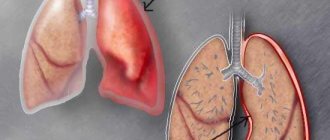Main symptoms:
- Escape from a stressful situation
- Hand trembling
- The desire to always look good
- Constriction in communication
- Stuttering
- Shyness
- Avoiding crowds of people
- Avoiding noisy companies
- Negative thoughts about yourself
- Negative attitude towards people
- Blurred speech
- Increased demands on yourself and others
- Skin redness
- Sweaty palms
- Panic attacks
- Stress when you need to step out of your comfort zone
- Stupor
- Cardiopalmus
Social phobia is a mental disorder expressed in anxious fear that paralyzes a person’s will and thoughts during his contacts with other people. People suffering from this disorder often avoid society, never speak in public, and are terribly embarrassed when meeting new people. Until recently, the term social phobia did not exist in medical practice - doctors believed that a certain detachment and shyness was just a character trait of a person. However, today it has become clear to doctors that social phobia is the same disorder of personal behavior as any other phobia, therefore this disorder can be successfully treated, and it can be treated either with the help of a psychiatrist and psychotherapist, or independently.
- Causes
- Symptoms
- Treatment
Definition of disease. Causes of the disease
Until now, not a single exact reason why social phobia occurs is reliably known, but research has shown that biological, genetic, psychological and social factors play a certain role in the development of this disorder.
- Biological reasons. It is currently believed that social phobia develops due to abnormal functioning of the parts of the brain that regulate emotions. These regions help the body control the “fight or flight” response, which occurs due to stimulation of neurons in a special part of the brain;
- Genetic reasons. Social anxiety is more likely to occur if a first-degree relative (parents, siblings, or children) has the disorder;
- Psychological reasons. The occurrence of an anxious social disorder may be associated with a past experience of negative or even humiliating experiences of interaction with society (for example, bullying or neglect by peers);
- Social reasons. Social phobia can develop in a person as a result of fear caused by observing the behavior of other people (for example, the patient sees how in some situation another person is laughed at or criticized). In addition, raising children in a hyperprotective family does not allow them to acquire sufficient social skills, to be socially adaptive and desirable.
Social phobia is a disorder in which a person experiences anxiety in situations where others are paying attention to them and when they may be criticized.[7] It occurs equally often in both men and women. The onset of this disorder in most cases is adolescence.
There are several theories about the origin of this disorder.
Genetic theory
It has been revealed that people from families where one of the members has social phobia are more susceptible to both this disorder and other anxiety-phobic disorders. However, the role of heredity has not been fully identified.[17]
Environmental and family factors
Epidemiological and clinical studies have shown that family factors such as overprotection, overcontrol, modeling of anxiety, criticism, and sometimes substance abuse have a role in the development of social phobia.[18] Also, some researchers believe that this disorder is facilitated by the presence of a traumatic situation in the anamnesis: public insult, ridicule, etc.[16]
Psychoanalytic theory
Sigmund Freud suggested that phobias arise through the transference of repressed aggression and sexual desires to an object. Moreover, this object is connected in a certain way with the patient.[3]
Behavioral reasons
Behavioral theory suggests that in phobic disorder, patients associate their fear with specific situations and objects. When a person associates an object and a feeling of fear, he begins to avoid this object, and therefore the fear associated with it. By concentrating on avoidance, patients stop fighting the emerging fear.[16]
If you notice similar symptoms, consult your doctor. Do not self-medicate - it is dangerous for your health!
Causes
The exact reasons that provoke the development of this pathology have not yet been identified. Among the main factors influencing the occurrence of social phobia, experts identify genetic predisposition, individual character traits, and severe psychological trauma received in childhood.
There are other reasons that can affect the development of this disorder:
- overly strict upbringing, in which parents made excessive demands on the child, without paying him due attention, and often scolded and punished him;
- increased overprotection, which prevents the child from making independent decisions, learning about real life with its worries and problems, as a result of which the child begins to doubt his abilities and is not confident in himself;
- lack of adequate assessment on the part of the parent, because of which the child simply does not know what is “good” and what is “bad”;
- frequent family scandals and squabbles, conflicts during growing up with parents and peers;
- bad experience of communicating with the opposite sex;
- social disapproval from peers, bullying, criticism, bullying;
- any other social skirmishes, experience of unsuccessful public speaking.
The roots of social phobia begin at school and university. After 25 years, social phobia rarely occurs, but can manifest itself until old age. It is in adolescence, when the psyche is not yet sufficiently strong, that a teenager may feel that he is not respected and his opinion is not taken into account. Some change the current situation in their favor, others prefer to step aside and look for the reason within themselves.
Characteristic
Most often, social phobia manifests itself in the fact that a person is afraid of making a mistake in something, looking bad or inadequate, experiencing embarrassment, or being humiliated in the eyes of others. The lack of social skills or adequate experience in social situations only exacerbates these fears. In some cases, anxiety can cause fear, which manifests itself in the form of panic attacks. As a result of such uncontrollable fear, the patient experiences certain social situations acutely, or tries to avoid them altogether.
Also, people with this anxiety disorder often suffer from so-called “anticipatory” anxiety - they pre-wind themselves up in some social situations even before anything actually happens. This behavior may occur in the days or weeks leading up to the event.
Usually social phobia is accompanied by distortions of thinking, incl. and the emergence of false (untrue) ideas about certain social situations, as well as the negative attitude of others. Without timely treatment, such an anxiety disorder has an extremely negative impact on the normal life of the sick person, since such important areas as education, work, personal relationships and social activities are affected.
People with social anxiety disorder are always anxious and afraid in specific situations, such as speaking in public. However, for most people, social phobia is based not only on the fear of losing social status. Here are some more common situations that provoke anxiety in social phobia:
- eating in front of other people;
- the need to take notes or work in the presence of people;
- the need to be the center of attention;
- any interaction with strangers, incl. meeting new people and attending parties;
- stage fright;
- the need to ask questions or make a public report in a group;
- exams or testing;
- use of a public restroom;
- telephone conversations.
Social phobia is the second most common type of anxiety disorder (after specific phobias), and the third most common mental disorder after clinical depression and alcoholism. It is somewhat more common in women, although men are also susceptible to it. Most often, social phobia manifests itself in adolescents or early adolescence, but it can develop at any time, incl. and in a very young child.
Social phobia can be associated with other mental illnesses, especially obsessive-compulsive and panic disorders, as well as depression. Many people with this anxiety disorder first come to a psychotherapist with complaints caused by such mental disorders, and not because of social anxiety. Therefore, such people are often misdiagnosed and given the wrong treatment.
Cognitive signs
People suffering from social phobia are truly horrified just by the thought that they might be being watched. As a rule, they are completely self-absorbed, closely monitor their appearance, and control their actions. Such people have increased demands not only on others, but, above all, on themselves. Social phobes try their best to make a favorable impression on others, while internally realizing that they will never succeed.
Constantly thinking about themselves in a black light, such people are in a state of increased anxiety and endless stress. They perceive any negative comments directly addressed to them, and consider themselves guilty of all the catastrophes in the world as a result of an inadequate assessment of their abilities. They are too biased and picky about themselves.
Social phobia. Symptoms
Young children with this mental disorder demonstrate their anxiety and fear by constantly crying, clinging to parents, or violent tantrums.
What might a person experiencing a sudden attack of social phobia feel, the symptoms of which are:
- Difficulty breathing
- Speech dysfunction, including logneurosis (stuttering)
- Nausea, heavy or increased sweating, fever
- Feeling of uncontrollable fear and terror
Social phobia usually occurs during adolescence, which is characterized by the expansion of social connections and, as a result, the emergence of worries about the impression made on others.[7]
Clinical symptoms appear in moments when a person is the center of attention or needs to establish social contact. As a rule, it is observed:
- increased sweating;
- trembling of the hands;
- nausea;
- frequent urge to urinate;[1]
- There may be a feeling of a “lump in the throat” and stuttering during a conversation.
Social phobia is characterized by anticipation neurosis, expressed in thoughts about impending failure during the performance of certain actions (acquaintance, conversation, public speaking).[6] As a result, most avoid situations that cause fear, or try to become least noticeable.[7]
Patients with social phobia often have comorbid conditions, such as agoraphobia, specific phobia, alcoholism and depression.[4]
Symptoms
Like other phobias, social phobia and its symptoms are found at the following levels:
- somatic;
- emotional;
- cognitive;
- behavioral.
Level of physiology and somatics
Since anxiety is clearly expressed in the picture of the disorder, the main symptoms at this level are similar to the symptoms of anxiety:
- heart rate disturbance;
- tachycardia;
- muscle failure or hypertonicity;
- nausea, even vomiting;
- pain in the lungs and heart;
- fatigue;
- dyspnea;
- throbbing headache;
- stomach pain.
This symptomatology is called negative and is a derivative of the body’s preparation to meet “danger.” Externally, social phobia manifests itself in pallor, slight trembling, and dilated pupils.
Level of emotions
In principle, patients live in constant expectation of the worst; everything is scary for them. If you go to any amateur forum dedicated to social phobia, many “self-healers” recommend taking various medications that suppress the emotional symptoms of the disease:
- feeling of danger;
- tension;
- restlessness (including motor anxiety), irritability;
- readiness to manifest symptoms at the physiological level;
- lack of thoughts (“suddenly my head went empty”).
Note that self-administration of sedatives and hypnotics (sleeping pills) can relieve some manifestations of anxiety, but will never eliminate the cause of its occurrence. Eventually, the body will stop responding to the chemicals it takes.
During acute periods of the disease, patients may experience difficulty sleeping in the form of nightmares, as well as an increase in the effect of déjà vu, which is caused by similar emotional experiences.
Level of cognition (thoughts)
At this level, symptoms are expressed in obsessive thoughts regarding stressful situations, as well as planning to avoid them.
This is where a decrease in attention is detected.
Behavior level
This level is a consequence of the situation experienced or replaying it in the head. It includes all physical activity aimed at reducing anxiety and eliminating its consequences:
- confusion of sleep;
- increased aimless motor activity (up to neurotic tics and obsessive actions);
- increased need for bowel movements;
- tendency to avoid.
Pathogenesis of social phobia
Psychoanalytic theory
Sigmund Freud in relation to phobias suggested that they are the result of excessive psychological defense of a person to control anxiety through the following psychological defense mechanisms - repression and transference. At the same time, signals that contribute to the emergence of anxiety are pushed back (repression) deep into the unconscious and fear is transferred (transfer) to objects and situations that are easier to control.
Despite the fact that the objects to which the feeling of fear was transferred are usually interconnected with alarming signals, patients do not worry about this connection. However, this concept did not receive support or further development.[3]
Behaviorist theory
According to behaviorists, fear of certain events and situations, as well as certain objects, is formed through classical conditioning. Avoidance of objects and situations that contribute to the appearance of fear begins even after a single experience of this feeling. At the same time, patients cease to control their fear.[16]
Social phobia: causes
The causes of social phobia can be very different. The most common:
- heredity
- environmental factors.
The risk of getting sick increases several times if one of your relatives had signs of the disease. Twin and genealogical research methods have proven that if there were people in the family with social phobia, then the probability of the descendants getting this disorder is approximately 35 - 50%. Moreover, not only the hereditary factor influences, but also the family one, since children who have been adopted can get sick.
Overprotection or excessive criticism of children in families increases the likelihood of developing this disease.
There have been some interesting studies on behavioral inhibition in newborns. Behavioral inhibition is not a pathology, it is a feature of the nervous system, in which the individual is more focused on himself, so the world around him is perceived as a source of fear and horror. This phenomenon is found in approximately 15% of cases and represents another risk factor for the fear of living to the fullest in the future.
Classification and stages of development of social phobia
There are two types of social phobia:
- specific;
- generalized.
With specific social phobia the problem is quite limited. People feel anxious only in one or a few specific situations, but not in most [4] (for example, when giving a speech in public or in the company of a sexually attractive person).
Specific social phobia is also expressed in the form of an anxious expectation of failure, that is, the fear that one will not be able to perform usual actions in public. However, establishing social contacts and communication outside similar key situations, as a rule, does not cause difficulties.[12]
With generalized social phobia, people are more likely to feel anxious in all situations that involve socializing and being in public.[9] The generalized form of this disorder, in contrast to the specific one, is characterized by an earlier onset of the disease, a fairly low education of patients, and lack of work and family.
Depression, social anxiety, and fear of making a negative impression on others are more pronounced in the generalized form.[4] The feeling of shame largely determines the corresponding behavior - social isolation - and comes to the fore, although it does not correspond to the real situation.
The fear of embarrassment is often accompanied by sensory ideas of attitude, such as a feeling of negative evaluation of people, the presence of a “flaw” that, according to the patient, he has, and a corresponding explanation for the behavior of others (disdainful smiles, ridicule, etc.).
Generalized social phobia is characterized by severe avoidance behavior, which results in isolation that excludes all social contacts.[12]
The stages of development of social phobia represent a vicious circle, including: a person’s negative thoughts about himself in a certain situation, aggravated by physiological symptoms.
Usually, a social phobe already initially has ideas that people will think badly of him, will laugh, etc. A neurosis of expectation is formed.[6]
When anticipating the onset of a corresponding social situation, these thoughts intensify (“I can’t cope,” “I won’t succeed”), which causes such physiological manifestations as sweating, redness of the face, and a feeling of “a lump in the throat.” Accordingly, during the social situation itself, there is a focus on one’s own state: “I’m blushing,” “I’m sweating and making a bad impression,” etc. As a result, anxiety appears and physiological manifestations intensify. This leads to the emergence of defensive behavior: avoiding eye contact, avoiding people in general, and the formation of thoughts after a given situation: “I failed”, “I looked stupid”, which further strengthens the negative opinion about oneself and contributes to the repetition of symptoms in subsequent similar situations .
Causes
The causes of this psychological disorder usually lie in childhood, when the child did not receive proper approval for his actions and recognition of his personality. If parents always compared a child with other children, overestimating the importance of their achievements and underestimating the importance of what he does, such a child will not have confidence in his abilities and in himself. This causes deep insecurity and low self-esteem.
Overprotection can also lead to the development of such a disorder, since excessive care for the child “tells” him that he is not able to do anything on his own. Hence, again, lack of confidence in yourself and your abilities.
There are also hereditary causes of such a disorder as social phobia. That is, if one of the relatives in the family suffers from this disorder, it is likely that the child will also have a tendency to such a disorder as social phobia. Moreover, the tendency is not always transmitted through genes - sometimes adopted children suffer from the disorder, that is, there is a family factor in the development of the disease.
The reasons for the development of the disorder may also lie in the impact of unfavorable life factors on a person. For example, if a person has experienced a painful breakup, divorce, or dismissal from work, severe stress can cause the development of social phobia. Also, 60% of people develop social phobia after traumatic events during which they experienced humiliation. For example, if you were ridiculed in public or were subjected to violence in front of significant people (this is especially common today among teenagers who, by offending their own kind, increase their status in the team).
Those people who were rejected by their peers in childhood also suffer from this disorder in adulthood. For example, a girl who was unpopular at school does not strive to prove herself in society, but hides from her social anxiety in the role of an exemplary housewife. Unpopular and rejected boys often try to cope with their psychological problems with the help of drugs or alcohol, which temporarily give them the opportunity to feel their importance in this world and stop being afraid of society.
In a word, the causes of this disorder always lie deep in the characteristics of a person’s personality, and therefore, in order to cure the disorder, it is necessary to recognize them, no matter how they are disguised.
Diagnostics
As mentioned above, people rarely turn to a psychotherapist with complaints of an anxiety disorder. More often, such a patient turns up to a therapist with general complaints about his physical condition.
Therefore, a preliminary diagnosis of “social phobia” is most often made by a therapist or family doctor after excluding the presence of any physical disease in a person. After excluding somatic diseases that have the same physiological manifestations, the therapist refers the person to a psychiatrist or medical psychologist, who will conduct a special diagnosis and prescribe treatment for this mental illness.
Characteristic signs of social phobia can be identified through an interview with the patient.
Manifestations of social phobia according to ICD-10 (International Classification of Diseases, Tenth Revision):
- There may be obvious fears:
- eating food surrounded by strangers;
- speaking in public;
- conversation with a person of the opposite sex.
- The presence of generalized (diffuse) fears is possible: almost any non-family social situation.
- The key is to be careful about vomiting in front of other people.
- Low self-esteem of the patient and fear of being criticized by others.
- Expression of primary anxiety in psychological, autonomic or behavioral symptoms.
- Anxiety predominates in specific social situations.
- Circumstances that contribute to the emergence of fear are avoided whenever possible. Moreover, this is usually so pronounced that in extremely severe cases it can lead to absolute isolation from society.
- An even more serious condition of patients is possible due to the presence of concomitant agoraphobia and depression, which completely confines them to their home. Agoraphobia is the preferred diagnosis when complete differentiation from social phobia is not possible. Depressive disorder as a diagnosis is not recommended if it is not possible to accurately identify the clinical picture of full-blown depressive syndrome.[11]
Signs of social phobia according to DSM-V (classification of mental disorders, USA):
- Constant fear of one or more social situations/moments in which it is necessary to prove oneself in front of strangers, or there is a possibility of being criticized. A person feels anxious that he may find himself in a humiliating or awkward position by committing, in his opinion, the wrong action.
- Anxiety in a fearful situation contributes to the occurrence of a situation-related panic attack.
- A person’s awareness of the meaninglessness and illogicality of this fear.
- Situations that cause fear are avoided. Or at the time of this situation the person experiences severe anxiety.
- Difficulties in daily life, at work, in relationships due to avoidance or anxious expectations and mental anguish over existing fear.
- Persistent and long-term (at least 6 months) anxiety and a feeling of fear, as well as a person’s isolation.
- There is no direct connection between fear and withdrawal and the result of taking any medications or other existing mental disorder.[10]
To diagnose the severity of manifestations of social phobia, it is possible to use the Liebowitz scale, consisting of 24 given situations, each of which is accompanied by two questions that need to be answered:
- “How pronounced is the fear, worry and anxiety that you experience in this situation?”;
- “How often do you avoid such situations?”
Differential diagnosis
Differential diagnosis should be made between social phobia and the following disorders:
In schizophrenia, avoidance of social situations is possible, which is mainly due to persecutory delusions. Those suffering from social phobia understand the painfulness of their thoughts and the inconsistency of their truth.
Differential diagnosis must be carried out with personality disorders, which are characterized by shyness and low self-esteem throughout life. With a phobia, there is a precisely established onset and a fairly short duration of the disease.
And finally, it is important to distinguish between social phobia and social inadequacy, in which anxiety is secondary, and the main thing is a lack of social skills. It is not a phobic disorder, but rather a pattern of behavior common to personality disorders and schizophrenia and seen in people with reduced intelligence. Frequent manifestations include hesitant, slurred and stammering speech, gesturing, and inability to maintain eye contact during a conversation.[7]
Social phobia
The material was prepared by Lyubov Karpova, psychologist, existential psychotherapist. Article navigation: 1. Symptoms and signs; 2. Reasons; 3. Treatment; 4. Self-help tools. Social phobia
(Social phobia)
is a fear or fear of social actions (for example, speaking in public), fear of social actions and interactions with people where confusion arises (for example, fear of blushing), fear of being in society, passers-by, prying eyes. In addition, people who experience social anxiety quickly develop a fear of being scared: the fear of fear.
Before you continue reading, take a test for social anxiety (editor's note)
Advertising Social phobia is based on fear of a negative assessment of others, anxious anticipation of an upcoming event, critical interpretation of personal behavior and interaction with people, which becomes a reason to avoid social contacts.
According to the International Classification of Diseases, 10th revision (ICD-10), social phobia is classified as a phobic anxiety disorder (F 40.1), in which the only or predominant symptom is the fear of certain situations that do not pose a current danger, which makes one avoid or be afraid of them. This group of phobias includes: Agoraphobia (F 40.0), Specific isolated phobias (F40.2), Other phobic anxiety disorders (F 40.8), Unspecified phobic anxiety disorder (F 40.9). Social phobia manifests itself early, and at the same time there is a high likelihood of other comorbid disorders such as depression, generalized anxiety disorder, drug or alcohol abuse, obsessive-compulsive disorder and neuroses. Social phobia is diagnosed in 8% of the population. It appears for the first time in children and adolescents, starting from 9-13 years old, when they have to independently enter into social contacts. Adults also suffer, more often with secondary and higher education, and men less often than women. What does a classic social phobia look like?
This is an anxious, irritable or shy person who avoids social contacts, speaking in public, experiences excitement and fear of upcoming events, and expects a negative assessment of his actions. Sometimes this phobia is hidden under the guise of touchiness, sullenness, or a person tries to create a positive image of a cheerful and pleasant “guy” who wants to leave a good impression of himself.
Symptoms and signs of social phobia
Social phobia is characterized not only by psychological symptoms, but also by physiological ones, such as tremors, rapid heartbeat, nausea, sweating, shortness of breath, etc. Panic attacks and anxiety attacks are also possible. Early diagnosis helps avoid serious consequences. Cognitive manifestations of social phobia:
- A feeling of horror at the sight of others;
- Tendency to see oneself in a worse light;
- Poor concentration;
- Uncontrolled train of thoughts;
- Feeling of emptiness in the head;
- Focus on yourself and personal behavior;
- High demands on oneself;
- “Replaying” past situations.
Physiological manifestations of social phobia:
- Trembling, tremor;
- Loss of coordination;
- Nausea;
- Profuse sweating;
- Increased heart rate, increased blood pressure;
- Difficulty breathing;
- Redness or paleness of the skin;
- Abdominal pain and cramps;
- Dizziness;
- Muscle tension (often the collar area).
Behavioral manifestations of social phobia:
- Awkwardness;
- Fussiness;
- Shyness;
- The desire to run and hide;
- Inability to look your interlocutor in the eyes;
- Voltage;
- Avoiding contact with people.
Forecast
Since the main sign of social phobia is the avoidance of situations in which it can manifest itself: avoidance of contacts with people, public speaking, any situations in which one might be the center of attention, a person experiencing social phobia does not develop or gradually reduces social skills. Due to their immaturity, difficulties arise in social communication, which leads to a negative reaction from others and to reinforcement of a person’s avoidant behavior. An irrational belief is formed: “In order to avoid getting into awkward situations, I’d rather not do anything or stay at home.”
Causes of social phobia
The main reasons lie in the child’s upbringing, environment, and the behavior of parents and teachers at school:
- Strict upbringing;
- High demands on the child’s behavior, learning and achievements;
- Assessment that is inadequate to the child’s capabilities;
- Lack of approval and moral support;
- Constant comparison with other more successful peers;
- A situation of insult, humiliation, ridicule;
- Increased control and care for the child;
- Anxiety of parents, provoking avoidant behavior and a state of neurosis in the child;
- A state of prolonged stress;
- Psychological trauma.
There is also an opinion about the hereditary predisposition and tendency to social phobia of people with emotional lability.
A clinical diagnosis is made if a person has already developed avoidant behavior: he begins to make more and more efforts to avoid getting into a situation in which he will be the center of attention. Eventually, avoidant behavior begins to affect a person's life: he begins to have difficulties with his studies, career, friendships and personal relationships. Gradually, many areas of social interaction begin to suffer, and eventually disappear altogether.
Treatment of social phobia
Social phobia can be corrected and with proper treatment, it can be completely eliminated. A common and effective way to treat social phobia:
- Cognitive behavioral therapy, which is carried out together with drug treatment (if necessary). Protocols for developing social skills in this approach were developed in the 70s of the last century and are actively used today. Therapy can be either group or individual. Later, in the 80s, a short-term strategic approach had its say in working with social phobia. This approach is interesting because it affects not only the person facing social phobia, but also his environment, gradually reducing the participation of the environment in serving a person who is not capable of social contacts. The strategic approach chose to target avoidant behavior.
The following methods have also shown effectiveness:
- Desensitization is the removal of anxiety and fear through muscle relaxation.
- Eye movement reprocessing (EMDR), where, with the help of eye movements, a person’s sensitivity to situations that cause fear is reduced and the level of fear is gradually reduced.
- Group psychotherapy. Group meetings are held under the guidance of an experienced psychologist or psychotherapist from 3 months to a year with a clear frequency. Group members, interacting with each other in a safe atmosphere, learn to withstand contact, build relationships, understand their own and others’ feelings, and realize the irrationality of thoughts about the fear of critical assessment of others. When faced with anxiety, they learn to withstand and reduce the severity of the manifestation.
- Long-term, deep psychotherapy in psychodynamic approaches will be an additional link in the treatment of social phobia and anxiety.
Self-Help Tools
Books, magazines, articles, scientific studies, various guides and techniques that can help in your own view of the problem.
Let's say the training of J.W. Biika’s “Training to Overcome Social Phobia” provides exercises with which a person can independently understand his social phobia. Exercises provide an opportunity to objectively consider your behavior in communicating with others. Book by Thomas Richards: Overcoming Social Anxiety and Shyness: Step by Step. Psychologist Thomas Richards spent 20 years treating social phobia and published a book that is the quintessence of his experience. The book is small in volume and reads quickly and easily. It contains attitudes, affirmations and self-help techniques, such as “Slow down and calm down”, “Stop thinking - act”.
You will receive help, support and understanding by communicating with the same people on specialized forums and chats, where people meet, talk, exchange experiences and their own experiences. Moderate physical activity, relaxing breathing exercises, yoga, swimming, dancing, walking and jogging in the fresh air, as well as another preferred sport will help to relax, switch attention and, in combination with other activities, will help cope with a phobic disorder. However, it should be borne in mind that if a person exhibits such reactions to situations of social interaction as panic attacks, nausea, lack of coordination of movements, difficulty breathing, confusion, then getting rid of and overcoming social phobia on your own is more difficult and requires contacting a psychiatrist or doctor - a psychotherapist who will prescribe medications and recommend adequate treatment.
Complications of social phobia
As a rule, the majority of patients are unable to cope with the existing symptoms on their own, so social phobia is often accompanied by other mental disorders: most often depression and anxiety disorder.[6] An increase in the intensity of the disease is usually accompanied by a change in the emotional background - from a slightly reduced mood to a severe form of depression with suicidal tendencies.[13]
To alleviate their condition, patients often abuse alcohol and drugs, thereby feeling more relaxed. As a result of this, addiction occurs, and concomitant somatic diseases also occur.
Quite often, in an attempt to make it easier to overcome fear and relieve mental discomfort, patients begin to take protective actions, creating entire rituals.[6] Subsequently, this leads to the fact that when fear or feelings of guilt appear in various situations, the need arises to perform a ritual in order to normalize one’s own state. This contributes to the development of obsessive-compulsive disorder.[14]
Among other things, problems of social adaptation are expressed in difficulties in the work sphere, family and everyday affairs.
Introduction
These fears can be caused by imaginary or actual observation from the outside. A person with social phobia may realize that his fears of social interaction are excessive or unreasonable, but this does not make overcoming them any easier. Some people with social phobia fear a wide range of social situations, while others only fear specific ones, such as those in which they need to perform at their best.
In most cases, social phobia begins to appear at an early age. 50% of those suffering from this disease developed symptoms before they were 11 years old, and 80% before they reached 20 years of age. Because the disease begins to appear so early, comorbid disorders such as depression or substance abuse may also occur. Psychological symptoms of social phobia are usually supplemented by physiological ones, such as: redness of the skin, hyperhidrosis (sweating), tremors, rapid heartbeat, nausea. Stupor and rapid, slurred speech may be present. In situations involving severe stress, panic attacks are possible. Early diagnosis usually helps minimize symptoms and avoid the development of additional (comorbid) disorders such as depression. Social phobia is sometimes called the “disease of missed opportunities.”[1][2][3][4][5][6][7][8]
Therapy methods
Social phobias are characterized by increased activity in the frontal (frontal) part of the brain, as shown in the picture. This area is especially activated in social phobics during moments of visualization or mental reaction.
The choice of treatments for social anxiety varies from person to person. In order to relieve severe symptoms of social anxiety, self-help is sometimes enough for a person. But in most cases, the patient requires professional help. What will the experts do with it?
The most effective treatment for social phobia is currently considered cognitive behavioral therapy (CBT) and group psychotherapy. In addition, the therapist may prescribe medications to help relieve the symptoms of social anxiety, which makes CBT more effective. Sometimes drugs and tablets are used without prescribing psychotherapy (for example, in young children).
Let's look at the most common methods of treating social phobia in more detail.
This type of therapy directs the thoughts of a person with social phobia into a more rational direction, and also helps the person stop avoiding situations that cause anxiety. Cognitive behavioral therapy is based on the premise that a person's thoughts influence his feelings, and his feelings, in turn, influence his behavior.
This type of psychotherapy teaches people how to respond in new ways to situations that trigger symptoms and manifestations of anxiety. This treatment involves systematic desensitization or exposure through a real frightening situation. With systematic desensitization, a person imagines a frightening situation and works with his social fears in a safe and calm environment, directly in the therapist's office.
Group therapy
Group psychotherapeutic methods for the treatment of social phobia include role-playing games and practicing social skills as part of a therapeutic group. Group therapy for social phobia widely uses acting, video recordings and observation, testing and special training exercises to practice situations that cause anxiety or fear in the real world.
A counseling psychologist improves a patient's social skills, self-esteem, and self-esteem, and teaches the person relaxation techniques, such as meditation or deep breathing.
Medicines
Medications can be used to relieve the symptoms of social anxiety, but they are not a substitute for proper treatment for this social anxiety disorder. As soon as a person stops taking the pills, the symptoms return with renewed vigor. Therefore, medications are usually used only as an adjunct to other therapy and self-help methods aimed at eliminating the causes of social anxiety disorder.
Three types of medications are used to treat this disease:
- Beta blockers. They are used to relieve high anxiety. They block excess adrenaline hormone, which is produced when a person feels anxious. Although beta blockers do not affect the emotional symptoms of anxiety, they can control physiological symptoms, such as trembling hands or voice, sweating, and rapid heartbeat;
- Antidepressants. Useful for very severe and debilitating social anxiety disorder. Zoloft is most often prescribed for social phobia;
- Benzodiazepines - me. They are quickly addictive, so they are prescribed only when other medication methods (as well as alternative treatment methods) are ineffective.
The prognosis for people with social phobia depends very much on the correct treatment. Many people are able to significantly improve their condition and enjoy productive lives. Unfortunately, social anxiety disorder cannot be prevented, but you can always find methods to relieve the symptoms of this disease.
Notes[ | ]
- The name “social anxiety disorder” is used in the American Diagnostic and Statistical Manual of Mental Disorders (DSM), including the latest edition of DSM-5, as well as in ICD-11. “Social phobias” - in ICD-10.
Sources
- Disease ontology database (English) - 2020.
- Archived copy (unspecified)
(inaccessible link). Retrieved June 10, 2020. Archived December 21, 2020. - The relationship between social anxiety disorder and hyperhidrosis — Treating excessive sweating or focal hyperhidrosis and brittle nails (undefined)
. drypharmacist.com. Retrieved August 24, 2013. - Connor KM, Jonathan RT et al.
Psychometric properties of the Social Phobia Inventory (SPIN): New self-rating scale (English) // British Journal of Psychiatry: journal. - Royal College of Psychiatrists (English) Russian, 2000. - Vol. 176. - P. 379-386. - PMID 10827888. - Anthony M.M., Coons M.J.
et al. Psychometric properties of the social phobia inventory: further evaluation // Behav. Res. Ther. : journal. - 2006. - August (vol. 44, no. 8). — P. 1177—1185. - PMID 16257387. - Liebowitz MR
Social Phobia (undefined) // Mod Probl Pharmacopsychiatry. - 1987. - T. 22. - P. 141-173. - PMID 2885745. - Garcia-Lopez Luis Joaquin, Hidalgo Maria D., Beidel Deborah C., Olivares Jose, Turner† Samuel.
Brief Form of the Social Phobia and Anxiety Inventory (SPAI-B) for Adolescents // European Journal of Psychological Assessment. — 2008. — January (vol. 24, no. 3). - P. 150-156. — ISSN 1015-5759. - doi:10.1027/1015-5759.24.3.150. [] - Piqueras, J. A., Espinosa-Fernández, L., Garcia-Lopez, L. J. y Beidel, D. C. (2012). Validación del Inventario de Ansiedad y Fobia Social-Forma Breve en jóvenes adultos españoles [SPAI-B: Psychometric properties in young adults]. Behavioral Psychology/Psicologia Conductual, 20, 505–528.
- Vieira, S., Salvador, C., Matos, A. P., Garcia-Lopez, L. J., & Beidel, D. C. (2013). Inventario de Fobia y Ansiedad Social-versión Breve: Propiedades psicométricas en una muestra de adolescentes portugueses [SPAI-B: Psychometric properties in Portuguese adolescents]. Behavioral Psychology/Psicologia Conductual, 21, 25-38.
- Pharmacotherapy in neurology and psychiatry: [Trans. from English] / Ed. S. D. Enna and J. T. Coyle. - Moscow: LLC: "Medical Information Agency", 2007. - 800 pp.: ill. With. — 4000 copies. — ISBN 5-89481-501-0.
- Kaczkurkin AN, Foa EB
Cognitive-behavioral therapy for anxiety disorders: an update on the empirical evidence. (English) // Dialogues In Clinical Neuroscience. — 2020. — September (vol. 17, no. 3). - P. 337-346. — PMID 26487814. [] - Hofmann SG
Cognitive mediation of treatment change in social phobia. (English) // Journal Of Consulting And Clinical Psychology. - 2004. - June (vol. 72, no. 3). - P. 392-399. - doi:10.1037/0022-006X.72.3.392. — PMID 15279523. [] - Clinical Guide to Mental Disorders / Ed. D. Barlow. Translation from English, ed. Professor E.G. Eidemiller. — 3rd ed. - St. Petersburg: Peter, 2008. - 912 p. — ISBN 978-5-94723-046-8.
- Wittchen G.-U.
Encyclopedia of mental health / Trans. with him. AND I. Sapozhnikova, E.L. Gushansky. - Moscow: Aletheia, 2006. - 552 p. — (Humanistic psychiatry). — ISBN 5-89321-124-3. - Pilling, S;
Mayo-Wilson, E; Mavranezouli, I; Kew, K; Taylor, C; Clark, D. M.; Guideline Development, Group. Recognition, assessment and treatment of social anxiety disorder: summary of NICE guidance. (English) // The BMJ: journal. — 2013. — May 22 (vol. 346). - P. f2541. - PMID 23697669. - Internal illnesses.
In
10
books. Book 10. Trans. from English / Ed. B. Braunwald, K. J. Isselbacher, R. G. Petersdorf, etc. - Moscow: Medicine, 1997. - 496 p. — ISBN 5-225-00640-X, ISBN 0-07-100134-4. - Davidson, Jonathan.
Treatment of Social Phobia With Clonazepam and Placebo // Journal of Clinical Psychopharmacology (English) Russian. : journal. - 1993. - Vol. 13, no. 6. - P. 423-428. - doi:10.1097/00004714-199312000-00008. - Gorodnichev A.V.
The place of benzodiazepine tranquilizers in modern treatment of anxiety disorders // Biological methods of treatment of mental disorders (evidence-based medicine - clinical practice) / Ed. S.N. Mosolova. — Moscow: Publishing House “Socio-Political Thought”, 2012. — P. 759-772. — 1080 s. — 1000 copies. — ISBN 978-5-91579-075-8. - Shyness & Social Anxiety Treatment Australia [https://www.socialanxietyassist.com.
- ↑ 12
Furmark, Thomas. Social Phobia—From Epidemiology to Brain Function. Retrieved February 21, 2006. - ↑ 1 2 3 Schneier, Franklin.
Social Anxiety Disorder (English) // The New England Journal of Medicine. - 2006. - 7 September (vol. 355). — P. 1029—1036. - Stein, Murray
Murray
(undefined)
. Council of University libraries. Retrieved February 2, 2012. - eNotes. Social phobia - Causes Archived February 9, 2006. Retrieved February 22, 2006.
- American Psychiatric Association.
Diagnostic and Statistical Manual of Mental Disorders, Fifth Edition (DSM-5). - Arlington, VA: American Psychiatric Publishing, 2013. - P. 203. - ISBN 978-0-89042-554-1. — ISBN 978-0-89042-555-8. - Alcohol Research and Health. Sarah W. Book, Carrie L. Randall. Social anxiety disorder and alcohol use
. Retrieved February 24, 2006. - Crozier, pages 358-9.
- eNotes. Social phobia Archived February 9, 2006. Retrieved February 23, 2006.
- Crozier, page 361.
- Kushner Matt G., Abrams Kenneth, Thuras Paul, Hanson Karen L., Brekke Marjorie, Sletten Sandra.
Follow-up Study of Anxiety Disorder and Alcohol Dependence in Comorbid Alcoholism Treatment Patients // Alcoholism: Clinical & Experimental Research. - 2005. - August (vol. 29, no. 8). — P. 1432—1443. — ISSN 0145-6008. - doi:10.1097/01.alc.0000175072.17623.f8. [] - ↑ 1 2 Gagan Joshi • Carter Petty • Janet Wozniak • Aude Henin • Ronna Fried • Maribel Galdo • Meghan Kotarski • Sarah Walls • Joseph Biederman.
The Heavy Burden of Psychiatric Comorbidity in Youth with Autism Spectrum Disorders: A Large Comparative Study of a Psychiatrically Referred Population // Journal of Autism and Developmental Disorders (English) Russian. : journal. - 2010. - Vol. 40, no. 11. - P. 1361-1370. - doi:10.1007/s10803-010-0996-9. — PMID 20309621. (inaccessible link) - Pini S., Maser JD, Dell'Osso L., et al.
Social anxiety disorder comorbidity in patients with bipolar disorder: a clinical replication (English) // Journal of Anxiety Disorders (English) Russian. : journal. - 2006. - Vol. 20, no. 8. - P. 1148-1157. - doi:10.1016/j.janxdis.2006.03.006. - PMID 16630705. - Perugi G., Akiskal HS
The soft bipolar spectrum redefined: focus on the cyclothymic, anxious-sensitive, impulse-dyscontrol, and binge-eating connection in bipolar II and related conditions (English) // Psychiatr. Clin. North Am. : journal. - 2002. - December (vol. 25, no. 4). — P. 713—737. - doi:10.1016/S0193-953X(02)00023-0. - PMID 12462857. - Bipolars and social phobia (undefined)
. biopsychiatry.com. Retrieved April 14, 2010. - Valença AM, Nardi AE, Nascimento I., et al.
Do social anxiety disorder patients belong to a bipolar spectrum subgroup? (English) // Journal of Affective Disorders (English) Russian. : journal. - 2005. - May (vol. 86, no. 1). - P. 11-8. - doi:10.1016/j.jad.2004.12.007. - PMID 15820266. - "Social anxiety disorder." CareNotes. Truven Health Analytics Inc., 2012. Health Reference Center Academic. Web. 15 Nov. 2012.
- Kendler K., Karkowski L., Prescott C.
Fears and phobias: reliability and heritability (undefined) // Psychological Medicine (English) Russian.. - 1999. - T. 29, No. 3. - P. 539-553 . - doi:10.1017/S0033291799008429. - PMID 10405076. - Warren S., Huston L., Egeland B., Sroufe L.
Child and adolescent anxiety disorders and early attachment (English) // Journal of the American Academy of Child and Adolescent Psychiatry (English) Russian. : journal. - 1997. - Vol. 36, no. 5. - P. 637-644. - doi:10.1097/00004583-199705000-00014. - PMID 9136498. - Schwartz C., Snidman N., Kagan J.
Adolescent social anxiety as an outcome of inhibited temperament in adulthood (English) // Journal of the American Academy of Child and Adolescent Psychiatry (English) Russian. : journal. - 1999. - Vol. 38, no. 8. - P. 1008-1015. - doi:10.1097/00004583-199908000-00017. - PMID 10434493. - National Center for Health and Wellness. Causes of Social Anxiety Disorder Archived December 1, 2005. Retrieved February 24, 2006.
- Athealth.com.Socialphobia. 1999. Retrieved February 24, 2006.
- Mineka S, Zinbarg R (1995) Conditioning and ethological models of social phobia. In: Heimberg R, Liebowitz M, Hope D, Schneier F, editors. Social Phobia: Diagnosis, Assessment, and Treatment. New York: The Guilford Press, 134–162
- Beidel, D. C., & Turner, S. M. (1998). Shy children, phobic adults: The nature and treatment of social phobia. American Psychological Association Books.
- Ishiyama F.
Shyness: Anxious social sensitivity and self-isolating tendency (English) // Adolescence: journal. - 1984. - Vol. 19, no. 76. - P. 903-911. - PMID 6516936. - La Greca A., Dandes S., Wick P., Shaw K., Stone W.
Development of the social anxiety scale for children: Reliability and concurrent validity (English) // J Clin Child Psychol : journal. - 1988. - Vol. 17. - P. 84-91. - Spence SH, Donovan C., Brechman-Toussaint M.
Social skills, social outcomes, and cognitive features of childhood social phobia (English) // Journal of Abnormal Psychology (English) Russian. : journal. - 1999. - May (vol. 108, no. 2). - P. 211-221. - doi:10.1037/0021-843X.108.2.211. - PMID 10369031. - Rubin KH, Mills RS
The many faces of social isolation in childhood (English) // Journal of Consulting and Clinical Psychology (English) Russian - 1988. - December (vol. 56, no. 6). — P. 916—924. - doi:10.1037/0022-006X.56.6.916. - PMID 3204203.
Treatment of social phobia
For the treatment of social phobia, it is advisable to use pharmacotherapy and psychotherapy together. The average duration of therapy is 6-12 months.[1]
Pharmacotherapy
The following groups of drugs have a good effect:
- selective serotonin reuptake inhibitors (SSRIs): Paroxetine, Fluvoxamine, Sertraline, Fluoxetine;
- monoamine oxidase inhibitors (MAOIs): Moclobemide (preferably high doses[1]);
- serotonin and norepinephrine reuptake inhibitors (SNRIs): Venlafaxine, Duloxetine.
There is evidence of a good effect of SSRI drugs:
- "Paroxetine" - weakens clinical manifestations, including unconscious fear and avoidance of interpersonal relationships;
- Fluoxetine corrects significant adaptation disorders associated with the most severe forms of the disorder.[15]
Reducing anxiety can be achieved by using tranquilizers: Lorazepam, Diazepam; for long-term therapy - Phenazepam, Tranxen.
It is possible to use minor antipsychotics - Thioridazine, Chlorprothixene.
Carbamazepine and Clonazepam are used to prevent episodes of fear.[2]
Pharmacotherapy is used both independently and as a preparation for psychotherapy.[1]
Psychotherapy
Psychotherapy plays a major role in the treatment of social phobia. Its main task is to reduce anxiety and correct inappropriate forms of behavior, as well as relaxation of the patient and his training to relax independently.[12]
Cognitive-behavioral psychotherapy is highly effective and is aimed at:
- assessing the rules and messages that govern the patient's reactions;
- restructuring of mental images associated with certain syndromes;
- changing the organization of ideas and rules responsible for the incorrect interpretation of events.
The most commonly used methods are the identification of automatic thoughts, errors and distortions in thinking, and empirical testing of realism. As a result, patients' behavior and thinking gradually become more realistic and adaptive, and their well-being improves.[16]
It is also possible to use hypnosuggestive therapy, the technique of which is aimed at changing the patient’s attitude towards individual painful symptoms (the emergence of fear in social situations) through hypnotic immersion, as well as self-training of the patient according to the doctor’s recommendations outside of therapeutic sessions.[13]
The result of therapy is the onset of complete or partial disappearance of clinical symptoms and maladjustment phenomena.
Evaluation of effectiveness is based on the reduction or disappearance of:
- anxiety, which manifests itself at the moment of taking action in a social situation;
- anxious anticipation of a situation or meeting with an object that causes fear;
- avoidance of social activity;
- clinical manifestations of comorbid disorders, such as depression.[1]
Treatment of the disease
Social phobia is a disorder that has an unfavorable course and requires professional treatment. First of all, it is necessary to distinguish this disorder from paranoid psychopathy, since the psychological symptoms are outwardly similar.
After differential diagnosis, a course of medication and psychotherapeutic treatment is prescribed, selected individually for each patient.
This disease is diagnosed and treatment is prescribed exclusively by a psychiatrist or psychologist, and the course of medications is determined only by a competent psychotherapist based on general tests! Only doctors savvy in psychology know how to completely get rid of social phobia!












